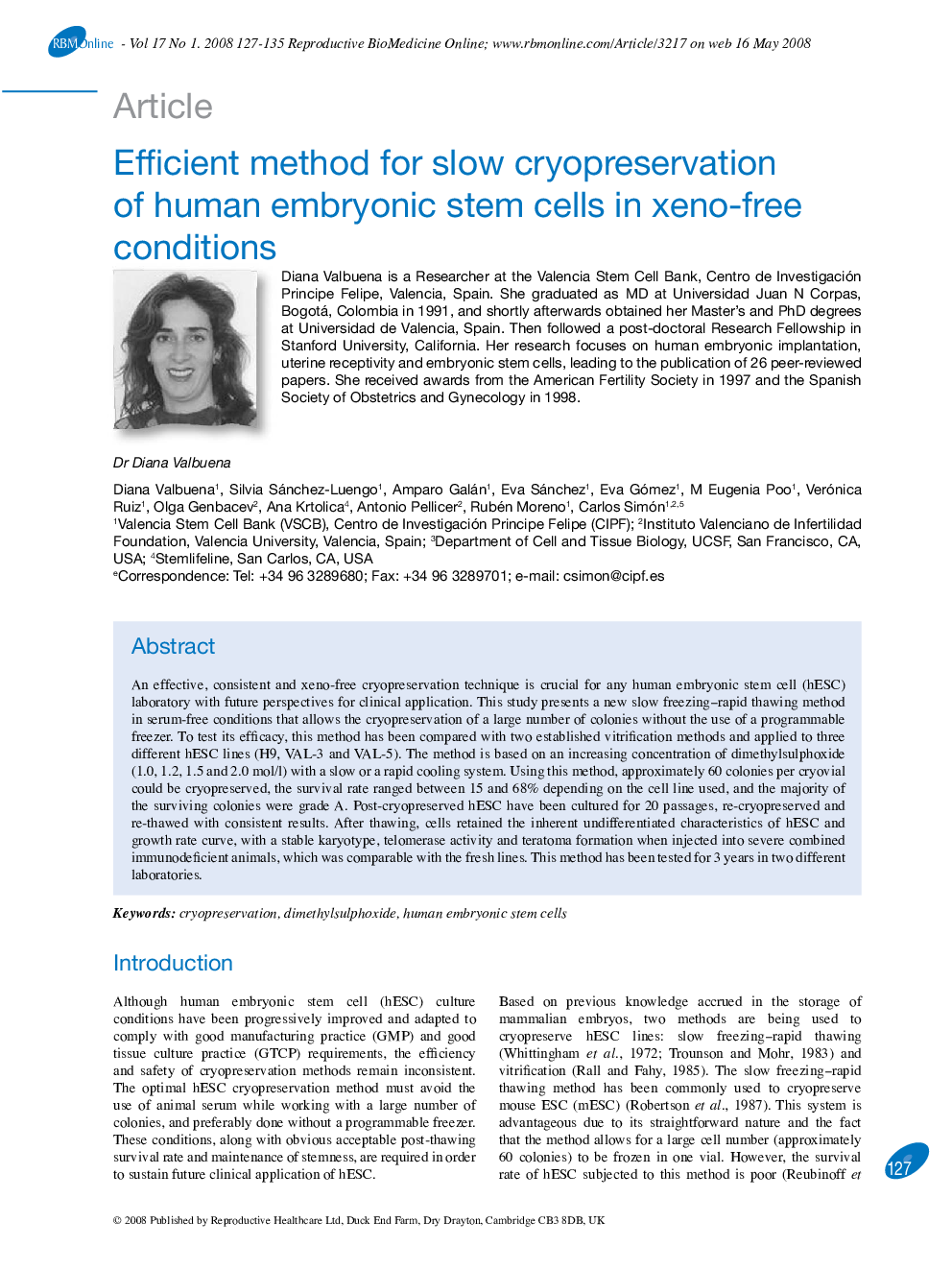| Article ID | Journal | Published Year | Pages | File Type |
|---|---|---|---|---|
| 3972413 | Reproductive BioMedicine Online | 2008 | 9 Pages |
An effective, consistent and xeno-free cryopreservation technique is crucial for any human embryonic stem cell (hESC) laboratory with future perspectives for clinical application. This study presents a new slow freezing–rapid thawing method in serum-free conditions that allows the cryopreservation of a large number of colonies without the use of a programmable freezer. To test its efficacy, this method has been compared with two established vitrification methods and applied to three different hESC lines (H9, VAL-3 and VAL-5). The method is based on an increasing concentration of dimethylsulphoxide (1.0, 1.2, 1.5 and 2.0 mol/l) with a slow or a rapid cooling system. Using this method, approximately 60 colonies per cryovial could be cryopreserved, the survival rate ranged between 15 and 68% depending on the cell line used, and the majority of the surviving colonies were grade A. Post-cryopreserved hESC have been cultured for 20 passages, re-cryopreserved and re-thawed with consistent results. After thawing, cells retained the inherent undifferentiated characteristics of hESC and growth rate curve, with a stable karyotype, telomerase activity and teratoma formation when injected into severe combined immunodeficient animals, which was comparable with the fresh lines. This method has been tested for 3 years in two different laboratories.
